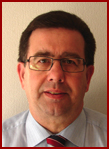The pension fund of Belgium’s KBC Group doubled its emerging markets exposure after the financial crisis left these regions relatively unscathed. Angele Spiteri Paris talks to CEO Edwin Meysmans
The Japanese Government Pension Investment Fund, the largest in the world with 117.6 trillion yen (€0.95 trillion) in assets under management, is reportedly considering investing in Chinese and Indian stocks. Norway’s Government Pension Fund – Global has already increased its exposure to emerging economies and a handful of UK pension funds have also awarded emerging markets equity mandates to a number of managers.
This new focus on the emerging economies has also caught the interest of Edwin Meysmans, CEO of the pension fund of the KBC Group, the second largest banking and insurance group in Belgium.
He says: “Our equity portfolio still accounts for around 40% of the whole pension fund portfolio [which has a total of around €1.2bn in assets]. About half of that allocation is European equity and the other half is non-European. The bulk of this non-European exposure used to be in US equities.”
But Meysmans says that things have changed in light of the crisis. “We’ve taken off some of the US exposure, which has come down to less than 30%, taken a little bit off the UK and Switzerland, and we have doubled our exposure to emerging markets from 5% to 10% of our equity allocation.”
The rationale for increasing the exposure to emerging market equities, particularly Asia, is two-fold. “In the long term we think that most of the global economic growth will come from that region, more than from Europe or the US. And in the short term, this region – for example, its banking system – was less impacted by the financial crisis,” says Meysmans.
This was the only shift the fund made in its equity portfolio throughout the crisis. “We did not actively rebalance the portfolio [in 2009], we just let the markets do their work.”
But now Meysmans says the fund is on the lookout for uncorrelated “real assets”, which financial parlance would indicate as being real estate, infrastructure and commodities.
Reality bites
The KBC pension fund has 10% of its investments in real assets and although real estate is the main sector within this portion of the fund, it is not the only one.
Meysmans says: “We’ve moved from listed real estate into more unquoted, unlisted real estate. It [the real assets portfolio] also includes a small allocation to infrastructure and a timber fund.”
The infrastructure investment was made in 2007 while the timber investment was made in 2008.
The fund is looking for more uncorrelated real assets, but Meysmans says: “They’re hard to find. We looked at commodities in the past but we haven’t made any investments in this space. I am also examining insurance-linked securities. They seem to be quite uncorrelated. We haven’t made any move yet but we’re just looking at this very strange asset class.”
A review of the current strategy is in progress and Meysmans says he aims to have the new approach in place by around June this year.
Although 90% of the KBC pension fund portfolio is managed in-house, third-party asset managers could see some mandates flung their way. Currently it is the more alternative asset classes that are outsourced, such as non-quoted real estate, infrastructure and private equity, and these uncorrelated sources of return are just what Meysmans is looking for.
However, although the CEO is still hunting for uncorrelated asset classes, he says: “The main lesson from the crisis is the disappointment in diversification. The correlation was so high in that time that we got no benefits from being diversified and that was a big disappointment. We didn’t get any diversification from real estate and absolute-return strategies didn’t give you any protection either.”
Model behaviour
Another dissatisfaction, came from the financial risk models used – value at risk (VaR) and asset-liability management (ALM).
Mesymans says: “I don’t blame the models, they are still okay, but we do need to have a better understanding of these models. We should understand that if the model comes up with a 95% chance [of success], you must not disregard the 5% chance [that something will go wrong] because it could happen, as we saw in 2008.”
The pension fund CEO says that rather than there being a tangible way of increasing understanding of these models, it is more about creating awareness of the fact that there are investors, even prudent investors, that can lose a lot of money.
Meysmans says: “You must be ready to assume this risk. I don’t know that everybody was aware of the fact that even with this type of portfolio, there is a chance that you could actually lose 20% of your assets. You need to ask yourself, as an investor, whether you are willing to take that risk and if you’re not willing, whether you can avoid the tail risks. You probably can, but at what price? Covering that last 5% would be very expensive, but at least you want to be aware of the risk you are taking.”
Armed with this added knowledge, Meysmans drives the pension fund into 2010 on a positive note.
Positive territory
Throughout the turbulence of the financial crisis, the KBC pension fund portfolio was not actively rebalanced. “We just let the markets do their work,” says Meysmans. This worked fine, he says, since the fund returned 15% at the end of 2009. “This was exactly the same as the year before but with the minus sign turned into a plus – which makes all the difference.”
At the end of 2008, the KBC pension fund posted a return of -15%. “The funding ratio came down but we just managed to stay above the water, with the ratio at 100%, but just barely,” says Meysmans.
©2010 funds europe





